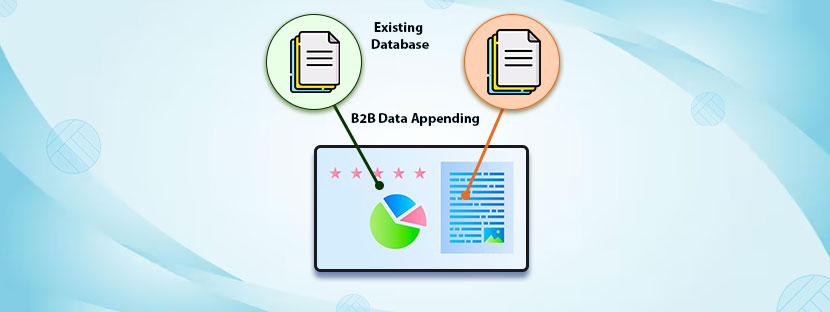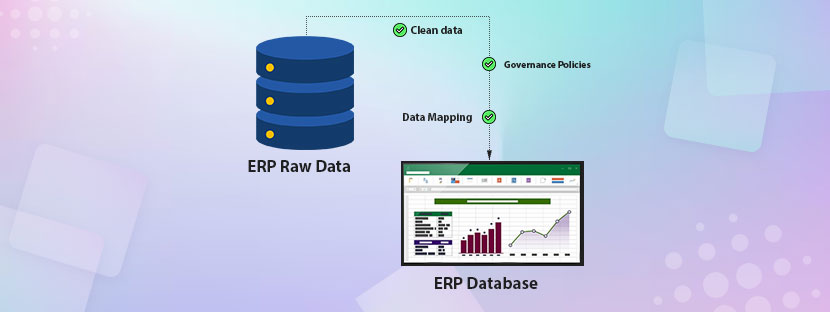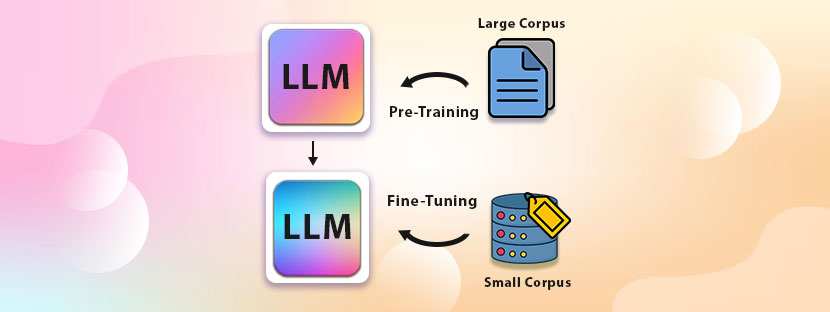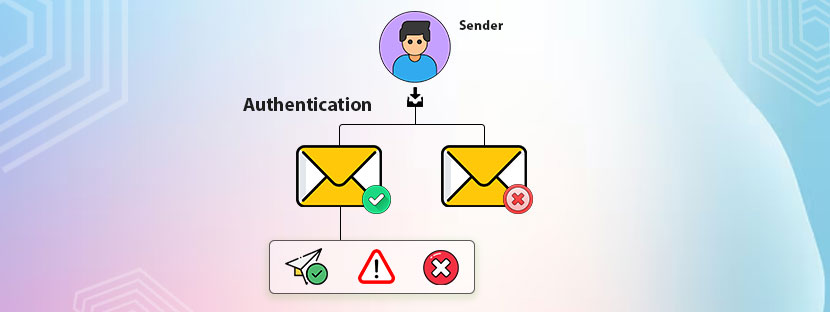Data appending is an umbrella term that covers enrichment, cleansing, quality improvement, and other measures of data. As it undermines so many operations, mistakes can happen here naturally.
But no. Mistakes in B2B data appending are dangerous. It hurts revenue generation capacity, reputation, and many things.
Please note that B2B data appending mistakes are easy to avoid if you follow the right path. This blog will detail everything about the appending process. Read it at your pace.
B2B data appending is all about
Every B2B organization has to provide accurate data to its core three teams. These are marketing, sales, and customer relations. Excellent business outcome you can expect only when you provide these teams with accurate and comprehensive data.
B2B data appending comes here as a process that adds additional information to the existing business data from external sources. It involves several methods and technologies to update the existing data and fill up the missing values. Many organizations use automated tools, while some prefer manual data updates via hiring data entry professionals.
During the course of appending B2B data, not all the missing values get filled, but it also corrects data formats and standardizes data across the channels.
Types of B2B data that get appended
Improving the depth and quality of B2B data is an absolute need for smooth operations. From marketing to customer relations, quality data shines everywhere. Data appending can significantly enhance the quality of data and make it super impressive for business operations.
Let’s check out the type of B2B data that you can append
Highlighting Common Mistakes in B2B Data Appending
A strong data appending system improves the quality of your data and makes it utilized for enhancing sales and marketing operations. However, many companies face struggles to append B2B data. The following mistake sometimes appears in the appending process, where you need to be more conscious.
Mistake 1: Incomplete Data
Even after adding the additional data into the vacuum fields, the datasets can still look incomplete. It mostly happens when you append your data partially. Due to incomplete or partial information added to the database, sometimes major sales and marketing operations take a back seat. Naturally, incomplete data cannot help in making a solid business decision.
Suppose after appending your existing data, you fetched only phone numbers and company details of your targeted audience. Therefore, the major issues will arise at the time of targeting. Your marketing team won’t be able to frame the emails because they’ll not be aware of the job titles or your target audience. So, it ends up hurting your marketing efforts.
To make the B2B data appending process effective, you have to validate and enrich your collected data simultaneously. It will make your datasets complete and valid. Before adding contact information like phone numbers or emails, you have to verify whether it’s active or not.
Mistake 2: Outdated Data
Job switches are real in the B2B industry, or any other industry for that matter. Every person working in any industry at any point in time may get switched after a while. So, if you cannot update your targeted list over time, all your sales and marketing efforts will definitely go to waste.
As experts say, making sales in the B2B industry starts when you make connections. Making a professional network with your targeted list is what you have to do in order to stay here. However, the people you’re connected with can get promotions, switch their positions, and leave their roles, or anything could happen. Therefore, you need to track all these while appending your marketing database.
Never leave your B2B data in the exact position for a while. It’s a gross mistake that most of the B2B marketers make. To avoid this mistake, consider constant update measures of your B2B contact lists.
Mistake 3: Duplicate Data
If the same data appears in any other location of the same database, consider it a classic duplication mistake. Duplication of B2B records is also a sign of overoptimization of the data appending process.
Duplicate data also means you’re targeting the same person twice. Instead of sending one email, you’ll send two emails within your limited marketing budget. It will impact your organization financially and also negatively affect its reputation. Staying conscious is all that it takes you need to do while appending your B2B data. Constant monitoring or deduplication of your data records can help here to make your B2B data appending strong.
Always make sure your B2B database remains clean, consistent, and free from all duplicate records. Taking appropriate steps to remove duplicate data is essential, and you must prioritize it.
Mistake 4: Incorrect Data
Business opportunities may crash if you are unable to approach your targeted people. Not connecting with them is the prime reason you need to consider. It happens when you consider incorrect data as to target. Specifically speaking, incorrect email, phone numbers, and other modes of communication.
Incorrect B2B data wastes marketing budget because it targets non-existent potential customers. Targeting the wrong people also harms brand reputations and increases the risks of compliance.
Pushing correct forms of data, i.e., verified contact information, into the contact channels is the only way to get out of this trap. Hence, while appending B2B data, you also need to consider verifying the data in one go. Connecting to any data verification system can help ensure the accuracy of contact information.
Mistake 5: Not Segmenting Data
Marketing operations bear their true colors when you approach each segment of your target audience with its specific needs. All your B2B audience is asking for the same thing, which will never happen, ever!
Every segment of your B2B audience demands something specific, and that’s where it is different from others. Therefore, when you collect B2B data or at the time of appending the database, you have to segment it. Categorization of B2B data makes it easy for your marketing team to launch different campaigns. Specific target groups will be covered due to these effective measures.
However, during the phase of data appending, segmenting the B2B data is often left ignored. That’s where the mistake happens. Segmenting data based on industry, geography, jobs, or any other data division is are must for accurate B2B data appending. Do not forget to segment your database if you’re working in the B2B domain.
How to avoid B2B data appending mistakes?
Gaps in B2B data become more apparent when you make mistakes while appending the data. Therefore, you must always make sure you do not commit any common mistakes when appending. Following a fixed strategy while reducing the gaps in the database is ideal, and you must consider that.
❖ Regularize data updates
Updating your B2B data with the latest insights is non-negotiable. Rather than updating your database one time, make it a constant process. Integrate an automated updating process if manual updates take time. At any point in time, you need to have an accurate and current set of data in your B2B database.
❖ Validate data immediately
Initiate rigorous data validation processes in the process. Accept only verified data to get inside your B2B database. To run effective marketing and sales operations, it requires valid contact details. Otherwise, you’ll end up targeting the wrong person. So, verify and validate all your contact information through multiple checks at different points.
❖ Broaden data collection
Appending simply means adding data to the existing database to fill the missing values. To do it consistently, you need to enhance your data collection scopes. Consider using multiple sources to append to your database. If required, apply different techniques and advanced mechanisms to append data.
❖ Bring advanced enrichment
Make richer datasets with your existing records using the advanced enrichment methods. It goes beyond the traditional data enrichment methods, and it adds context to the data. It goes deeper into the data insights to extract details like social media activities, purchasing capacity, and other things. Adding up this sort of information can make your data assessment process comprehensive.
❖ Harmonize your data
Maintain a consistent flow of your data across the database that you appended. Harmonizing your data is the best way to avoid data duplication. Applying harmonization measures, you can unify disparate data from multiple data sources into a single and consistent format for better use. It could resolve discrepancies like mismatching fields, formats, and naming conventions etc.
Let’s hypothetically speak about a “Before & After” scene of data appending in a marketing process
| Before data appending | After data appending |
|---|---|
| The attendance rate of the webinar is low. Email bounce rates are going up. This SaaS company is trying very hard to close B2B deals. But the database lacks key information like behavioral insights | The marketing team is now having an enriched database. It includes accurate contact details, customer preference information, and firmographic data. Using this appended database, the marketing team increased webinar attendance by triple times. Plus, it helped the sales team to close more deals. |
Challenges of appending B2B data
Like any other process, data appending operations also involve quite a few challenges. But these challenges can easily be avoided when you append your data in the right way. The following hurdles can come into your operations when you try to append your B2B data.
✰ Data privacy concerns
Maintaining compliance with all the data privacy and protection laws is difficult as well as time-consuming. A small mistake in maintaining compliance while appending data can harm the entire operation. The risk of your organization entering into a legal battle can increase due to this process. Hence, always adhere to the privacy laws and regulations to perform data appending operations.
✰ Involvement of Higher Appending Cost
Indeed, the cost of appending B2B data is heavy. It’s an expensive measure, and it can drain your budget in the long run. Many companies can’t afford to keep a dedicated team for managing data appending tasks. Besides that, the cost of appending data for short-term use is also higher than usual.
✰ Burden of data
Checking the compatibility of your data system has to be done before initiating data appending. After completing the appending process, you need a secure space to store all your data. Many organizations face challenges when they cannot provide enough space to accommodate quality data. So, keeping loaded data in an unprepared database can overwhelm the system as well as the architecture.
✰ Compromise data quality
The risk of undermining the data quality is there when it comes to appending B2B data. Considering incorrect information, working through a fragile system, and other factors, are there to make the quality matter down. To maintain the complete accuracy of your appended data, you have a perfect system. Working with a fragile data appending system can put your data accuracy matter in risk.
The Future of B2B Data Appending
We are in the middle of a transition where everything is changing so rapidly. The B2B industry is one of the early adopters of change, so it will definitely impact their operations. When it comes to the data appending process, the following matters will keep influencing the work procedure.
⮞ Popularity of AI-powered data appending tools will increase
AI has already revolutionized the data enrichment process so far. Appending becomes much easier than before using any AI-powered tool. Plus, it reduced the requirements of having a fixed process for the data appending and enrichment work. With the help of data enrichment vendors, you can manage data appending tasks without any hassle.
Here are the popular tools you can try for appending your data: ZoomInfo, Clearbit, InsideView, etc.
All these tools are AI-backed, which means they could automate most of the appending tasks. For example, if you provide these tools with customer names, it will help you add other insights of customers, like their job titles, the company where they work, revenue turnovers, etc. Besides appending data, these tools are also capable of doing the data matching part. All the information gets updated into your database in real-time.
⮞ Strict rules and regulations will come into play
With time, data privacy rules and regulations are getting stricter, and hence, the effect will be visible in the data appending operations. The following rules and regulations will be updated further for the safety and privacy of personal data.
In the future, the data appending will become more permission-based rather than general measures. The entire data collection or data enrichment will evolve more into an anonymized system later on.
⮞ Real-time database update
In 2030 or later, we are not going to work like we are doing right now. The B2B industry will move faster, and it will require faster data processing. Hence, real-time data appending will become more relevant for the industry in the future. Business leaders will need more current data at their fingertips. To adopt this, you have to start working with dynamic databases from now onwards.
⮞ Incorporation of predictive analytics into appending
The involvement of machine learning in the data appending process will become a normal thing. For example, putting predictive analytics in the data appending process helps with forecasting future outcomes or trends. It can simply make your database ready for the future because it can assess what is going to happen next, but in advance.
The best way to solve B2B appending challenges
A simple and efficient way to manage the B2B data appending work is to hand over the tasks to professionals. It means you can keep your trust in data enrichment experts for managing your data appending tasks. Experts will always provide the best values to your B2B data without any complications. From data cleaning to enrichment, data entry experts can handle every single operation to append your B2B data.
Think it logically. Having a tool can ensure adding data to your database, but it does not ensure whether it is completely valid or not. Well, some applications promise to validate all data completely, but they do not come within your budget. Interestingly, getting experts to append B2B data falls within your budget and does not compromise the quality of your data.
Expert data entry professionals systematically append missing addresses, update emails, phone numbers, add firmographic data, and other variations of datasets. Also, they help enhance the value and reliability of your appended B2B datasets.











